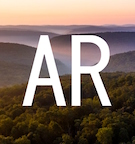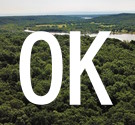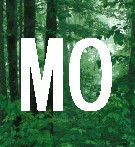
|
||||||||||||||||||
|
|
||||||||||||||||||
|
| ||||||||||||||||||
  








  









| ||||||||||||||||||
BFRO's Skookum Meadow Expedition
| Expedition Roster | |
|
|
San Juan Capistrano, CA |
| Richard Noll | Edmonds, WA |
| Jeffrey Lemley | White Salmon, WA |
| Erin Lee | White Salmon, WA |
| Thom Powell | Clackamas, OR |
| Dr. LeRoy Fish | Triangle Lake, OR |
| Dr. Gregory Bambenek | Duluth, MN |
| James Henick | Washougal, WA |
| Alan Terry | Vancouver, WA |
| Derek Randles | Belfair, WA |
| John Mort | Perth, Australia |
| Daniel Searle | Perth, Australia |
| Ian Pugsley | Perth, Australia |
| Special thanks go to the following individuals, without whom this expedition and its successes would not have been possible. |
| Ron Schaffner | Cinncinati, OH |
| John Freitas | Crescent City, CA |
| Vaughn Hughes | Hillsboro, OR |
| Kathy Moskowitz | Sonora, CA |
| Denise Blazek | Perth, Australia |
Account by Jeffrey
Lemley, BFRO.
Acknowledgements to Dr. LeRoy Fish, Richard Noll, and Theo Stein.
During September 16-23, 2000, the BFRO tried several new approaches for obtaining evidence of Sasquatch existence in the Pacific Northwest. The primary method employed was to experiment with a high-tech thermal imager. The instrument is able to detect the heat or infra-red images of a potential sasquatch or other animals nearby. The primary expedition goal entailed testing the instrument to see if it was a practical tool in furthering sasquatch research. In addition, other attractant methods were used in conjunction with this thermal unit. Expedition members hoped to lure an animal for close observation and to make a record with film and tape.
Attraction methods employed both auditory and olfactory stimuli. One prominent attractant was a call broadcasting system which had considerable geographical range. The call used was a scream recorded near Lake Tahoe in late August 2000. The technique was to send intermittent calls at spaced intervals and at high volumes for several nights throughout our stay. These broadcast calls could be heard by us at a distance of up to two miles; we presume that the range for animals was farther. The purpose of broadcast calling was to attempt to coax a sasquatch from a considerable distance, thereby allowing greater coverage of territory.
Olfactory methods of attraction also had the potential to bring the animals in close once they had been lured to the immediate area by the broadcasts. These olfactory attractants included cooking smells, pheromone chips, and fruit bait. An animal's curiosity for food and sex probably played an important role toward the success of our expedition.
We selected an area for base camp that was directly west of an area known as Skookum Meadow, which is approximately 20 miles east-southeast of Mt. St. Helens. The Skookum Meadow area was chosen due to its remoteness and many square miles of roadless areas. Directly to the north of Skookum Meadow is the Lewis River, which forms the southern boundary of the area known as the Dark Divide, a roadless area spanning over 100 square miles. Directly south of Skookum Meadow is the Indian Heaven Wilderness, another roadless area covering in excess of 30 square miles.
The entire area supports robust populations of elk, deer, coyote and black bear. The region has a variety of natural food sources, including native blue huckleberries. By placing base camp directly west of the meadow we capitalized on the prevailing winds to carry the scents of olfactory attractants into the meadow from our baited areas.
The term "Skookum" was commonly used by both Native Americans and early settlers to describe a large, hairy, and often putrid smelling "Man of the Woods" that allegedly dwelled in the remote forested regions of the Pacific Northwest. The Skookum Meadow area is purportedly one of the more frequented locales for these unknown primates. Several reports of sightings and unrecognized vocalizations have been reported from this area over the last few years.
BFRO researchers, in consultation with scientists, surmised that an expeditionary team staying in this area for several days and using several types of attractants should have a reasonable chance of luring a large primate close enough to record thermal or infrared images.